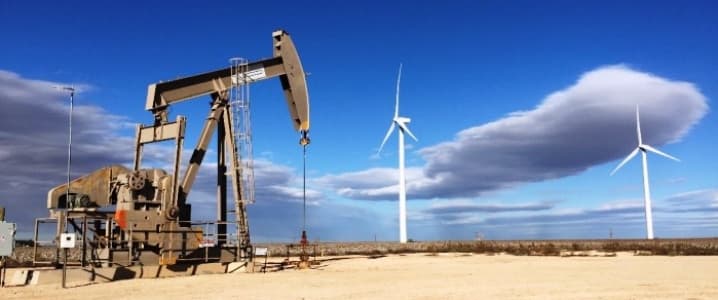Just a decade ago, few could have imagined that the U.S. would be producing more than 10 million bpd of crude, but with the explosion of shale production, that is exactly where we are.
In what can only be seen as a complete U-turn in policy and mindset, the south-north flow of imported oil is poised to become the north-south flow of exports. This about turn must of course be borne out by logistics and practicalities first, as aging infrastructure that was designed primarily with ship-to-shore movement in mind requires a significant overhaul if it to meet this reverse demand.
The consequences of this shift are already being revealed, as trading volumes in WTI futures surged ahead of those of Brent, and trading of U.S. oil future contracts has doubled in the last decade. What formerly acted more as an indicator of inventories is now being seen as a benchmark for traders and shippers, and the spread between WTI and Brent is narrowing.
At this rate of production increase, the U.S. is set to overtake Russian crude output in late 2018, making it the foremost global supplier. At $60 per barrel, drilling companies can afford to develop their equipment and techniques, while at the same time keeping shareholders happy.
Just how long it can last is open to debate, but with the stagnant output of North Sea oil seemingly unable to meet the rising demand in developing markets such as Asia, the boom of U.S. oil production shows no sign of slowing.
Rather than being crippled by OPEC's attempt to flood the market, North American shale seems to have taken this challenge in stride, and even become stronger, faster and more efficient as a result. Couple this with U.S. crude’s more dynamic pricing system and it isn't hard to see why WTI futures are overtaking futures like Brent and Dubai. Related: Frac Sand Shortage Threatens Shale Boom
The gap in production that OPEC is attempting to create is simply being filled by U.S. shale, so it seems that not only did OPEC shoot itself in the foot by forcing the price to $26 per barrel, it is compounding that mistake by allowing the U.S. to flood the market itself.
Saudi Arabia remains unconcerned, and the U.S. lacks the infrastructure to deliver anything near the volume that it does to China, but the very fact that it is shipping any oil at all amply demonstrates the U.S.’s position in the global oil trade.
No longer a slave to the market according to OPEC, the U.S. finds itself in the enviable position of being in control of its own oil supply. When oil prices are high it can ramp up production, thereby both saving money on expensive imports and capitalizing on high exports. Should prices fall again, it can take advantage of low import costs, and scale back production until it reaches a favorable level.
What this means for OPEC is that its power is a mere shadow of what it was in the 1970s. Its influence of the global oil trade is evaporating, and its reliance on oil wealth is something that is looking untenable at best. The rising dominance of Russia and the U.S., coupled with the global shift away from oil consumption means that it must diversify its income if it wants to survive. The Aramco IPO may just be the very beginning of that process.
Related: U.S. Crude Exports Hit A Major Milestone
What we’re seeing is more than just the U.S. reversal from energy dependence to energy dominance, but a complete transformation of the global market.
The elastic production, diverse crude quality, vast storage ability, integrated trading capabilities and concentrated refining capacity that has come about from the boom in shale oil output all amount to energy independence, but crucially they mean that the U.S. is able to dictate the market on its own terms.
This luxury was barely conceivable a decade ago, but it’s looking more and more like the shape of things to come.
By Gary Norman for Oilprice.com
More Top Reads From Oilprice.com:
- 5 Record Breaking Gemstones Even Billionaires Can’t Buy
- Brazil’s Coming Oil Boom Will Weigh On Oil Prices
- The Billion Dollar Fuel Mandate Gone Wrong


















